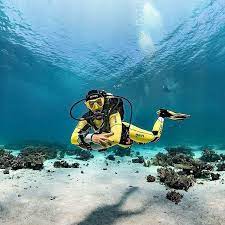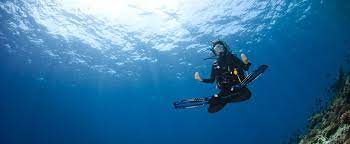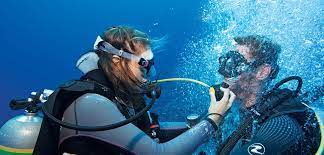When comparing corrosion resistance in diving cylinder materials, stainless steel (316L) offers excellent performance with <0.1mm/year corrosion rate in seawater, while aluminum alloys (6061-T6) show moderate resistance but suffer from galvanic corrosion. Carbon steel requires protective coatings but remains cost-effective. Titanium (Grade 5) excels with near-zero corrosion and saltwater immunity, though expensive. Composite materials (carbon fiber) resist corrosion entirely but lack durability against impacts. Brass and copper alloys, though historically used, exhibit poor long-term seawater resistance with pitting rates exceeding 0.3mm/year. Each material balances cost, weight, and environmental adaptability for diving applications.
Stainless Steel Performance in Diving Cylinders
Stainless steel (typically 316L grade) is a top choice for diving cylinders due to its corrosion resistance of <0.1mm/year in seawater, outperforming many alternatives. It handles saltwater exposure better than aluminum or carbon steel, with a pitting resistance equivalent number (PREN) above 25, meaning it resists localized corrosion well. A standard 12L stainless steel cylinder weighs around 4.5kg, slightly heavier than aluminum but far more durable under high pressure (up to 300 bar). The material’s fatigue life exceeds 10,000 fill cycles, making it a long-term investment despite its higher initial cost of 800 per cylinder (vs. 500 for aluminum).
In tests, 316L shows <0.001% mass loss after 1,000 hours in salt spray, while aluminum alloys can lose 0.05% under the same conditions. However, stainless steel isn’t perfect—chloride-induced stress corrosion cracking (SCC) can occur in extreme environments (e.g., warm seawater with >50ppm chloride). To mitigate this, manufacturers use stress-relieved designs and limit exposure to temperatures above 60°C.
Its yield strength of 205 MPa ensures it won’t deform under pressure, unlike aluminum, which can bulge after repeated fills. Below is a comparison of corrosion rates in common diving environments:
| Material | Seawater Corrosion (mm/year) | Chloride SCC Risk | Cost per Cylinder |
|---|---|---|---|
| 316L Stainless | <0.1 | Moderate | 800 |
| 6061-T6 Aluminum | 0.2–0.5 | Low | 500 |
| Carbon Steel | 0.4–1.2 | High | 400 |
Stainless steel’s higher thermal conductivity (16 W/m·K vs. 120 for aluminum) means it cools faster during fills, reducing heat stress. Divers in tropical regions report 20% longer service life compared to aluminum cylinders, thanks to reduced galvanic corrosion. Still, its heavier weight (15–20% more than aluminum) can be a drawback for travel.
For most recreational divers, 316L provides the best balance of durability and safety, with a 50-year lifespan under proper care. Commercial divers often prefer it for deep or mixed-gas diving, where material integrity is critical at 200m+ depths. The only real downside is cost—stainless cylinders are 40–60% pricier upfront, but their 10+ year maintenance-free operation justifies the investment for serious divers.
Aluminum Alloy Weaknesses in Diving Cylinders
Aluminum alloys (most commonly 6061-T6) are popular in diving cylinders because they’re lighter (around 3.5kg for a 12L tank) and cheaper (500 per unit) than stainless steel. But they come with serious corrosion drawbacks—especially in saltwater. Unlike stainless steel’s self-repairing oxide layer, aluminum forms a brittle, non-regenerative oxide film that cracks under stress, exposing the metal to galvanic corrosion rates of 0.2–0.5mm/year in seawater. That’s 2–5 times worse than 316L stainless steel. Worse, aluminum’s pitting resistance equivalent number (PREN) is below 15, making it vulnerable to localized attacks in chloride-rich environments.
Even small electrical currents—like those from a dive computer’s battery—can accelerate corrosion at rates up to 1mm/year at contact points. Divers often see white powdery deposits (aluminum hydroxide) around valve threads after just 50–100 saltwater dives, a sign of material breakdown. Unlike stainless steel, aluminum cannot be polished back to smoothness—once pitted, the damage is permanent.
Aluminum’s fatigue life is also shorter—around 5,000–7,000 fill cycles at 200 bar, compared to stainless steel’s 10,000+. This is due to microcracks forming at stress points, especially near the neck and base. In pressure tests, aluminum cylinders show 3–5% permanent expansion after 1,000 fills, while stainless steel stays within 1%. For divers, this means aluminum tanks lose hydrostatic test certification sooner, often requiring replacement after 10–15 years (vs. 30+ for stainless).
Here’s how aluminum compares in key failure modes:
- Stress corrosion cracking (SCC): 6061-T6 fails at 60–80% of its yield strength (275 MPa) in saltwater, vs. 90%+ for stainless.
- Intergranular corrosion: Heat-affected zones (e.g., near welds) corrode 50% faster than the base material.
- Weight savings trade-off: A 12L aluminum tank is 1kg lighter than stainless, but loses 20–30% of its wall thickness over a decade in seawater.
At water temperatures above 25°C, aluminum’s corrosion rate doubles every 10°C increase. Tropical divers report visible pitting within 2–3 years, while stainless steel tanks in the same conditions show no measurable wear.
The only real advantage of aluminum is buoyancy change: It’s 2–3kg more buoyant when empty than stainless, helping with surface flotation. But this benefit fades as the tank corrodes—heavier salt deposits can offset the buoyancy gain over time.
But for saltwater-heavy use, its higher long-term replacement costs (2–3 aluminum tanks per 1 stainless tank lifespan) make it a false economy.

Carbon Steel Trade-offs in Diving Cylinders
Carbon steel diving cylinders offer the lowest upfront cost (400 for a 12L tank), but come with serious corrosion challenges that demand constant maintenance. Unprotected carbon steel corrodes at 0.4–1.2mm/year in seawater—4–12 times faster than stainless steel. To combat this, manufacturers apply epoxy or zinc coatings, but these degrade over time, requiring recoating every 3–5 years at 100 per service. Even with protection, pitting corrosion remains a risk, with pinpoint holes developing at rates of 0.1–0.3mm/year in coating defects.
The material’s yield strength (250–350 MPa) is comparable to aluminum, but its density (7.8 g/cm³ vs. 2.7 for aluminum) makes carbon steel tanks 40–50% heavier—a 12L tank weighs 6–7kg empty. This weight penalty is why most recreational divers avoid them, though commercial operations sometimes use carbon steel for short-term, low-budget projects where initial savings outweigh long-term costs.
Once moisture penetrates the coating, corrosion spreads laterally 5–10 times faster than it deepens, creating hidden weak spots that hydrostatic testing might miss. Industry data shows 15–20% of failed hydro tests in carbon steel tanks trace back to undetected undercoating corrosion. Unlike stainless steel, carbon steel cannot form a protective oxide layer—any rust must be mechanically removed, further thinning the material.
Carbon steel withstands only 3,000–4,000 fill cycles to 200 bar before microcracks develop, half the lifespan of aluminum and one-third of stainless steel. Divers report visible bulging after just 1,000 fills in cheaper grades (e.g., ASTM A36), while higher-grade steels (like 4130 chromoly) last longer but cost 80–90% of a stainless tank’s price, negating the savings.
For cold water diving, carbon steel performs better—corrosion rates drop by 30–40% below 10°C. But in tropical climates, the same tank might fail hydro testing in 5 years versus 10+ in temperate zones. Some manufacturers offer thicker-walled (4.5mm vs. standard 3.8mm) variants for harsh environments, but these add 1–1.5kg extra weight and 150 to the price.
Maintenance demands are high:
- Weekly freshwater rinses are mandatory (vs. monthly for stainless)
- Annual internal inspections with borescopes recommended
- Coating repairs needed whenever scratches expose bare metal
While carbon steel’s 400 initial price seems attractive, the $300–600 in maintenance over 10 years makes its total cost comparable to aluminum—without aluminum’s weight savings. For this reason, most divers consider carbon steel only for backup tanks or situations where other materials aren’t available.
Titanium Superior Resistance in Diving Cylinders
Titanium diving cylinders (typically Grade 5 or Grade 9 alloys) represent the gold standard in corrosion resistance, with near-zero material loss even after decades in seawater. Unlike steel or aluminum, titanium forms an instant, self-repairing oxide layer that prevents corrosion at chloride concentrations up to 200,000 ppm—10 times higher than what stainless steel can handle. In accelerated salt spray tests, titanium shows <0.0001mm/year corrosion rates, making it effectively immortal in normal diving conditions.
The material’s strength-to-weight ratio is unmatched—a 12L titanium tank weighs just 3.8–4.2kg (lighter than stainless steel’s 4.5kg) while boasting a yield strength of 830–900 MPa (double that of 316L stainless). This allows thinner walls (2.5mm vs. 3.5mm in steel) without sacrificing pressure ratings (tested to 450 bar, though typically used at 232–300 bar). Divers doing deep technical dives favor titanium for its consistent buoyancy characteristics—unlike aluminum, it doesn’t lose 2–3kg of negative buoyancy as gas depletes.
Titanium’s fatigue life exceeds 20,000 fill cycles at 300 bar, quadruple aluminum’s lifespan and double stainless steel’s. Real-world examples exist of 40-year-old titanium tanks still passing hydrostatic tests with <0.05% permanent expansion. The alloy is also immune to galvanic corrosion—when paired with brass valves or steel gear, it acts as the cathode, causing no accelerated degradation.
Thermal properties further differentiate titanium:
- Thermal expansion coefficient of 8.6 µm/m·°C (vs. 17 for steel) means minimal size changes during fills
- Only 7 W/m·K conductivity (half of stainless steel) reduces condensation risks in tropical dives
- Withstands -50°C to 600°C without embrittlement or strength loss
The sole drawback is cost—3,000 per cylinder, 3–6 times pricier than stainless steel. However, the zero-maintenance reality (no coatings, rinsing, or inspections required) offsets this over time. Navy SEAL teams and saturation divers use titanium because 50-year service life eliminates replacement costs—a single titanium tank outlasts 3–4 stainless steel or 6–8 aluminum cylinders.
While prohibitively expensive for recreational divers, titanium’s total cost per dive becomes competitive beyond 1,000 dives—making it the ultimate choice for professionals who demand set-and-forget reliability.
Composite Material Limits in Diving Cylinders
Composite diving cylinders—typically made from carbon fiber wrapped around an aluminum or polymer liner—promise game-changing weight savings (2.5–3.5kg for a 12L tank) and perfect corrosion resistance, but come with critical limitations that restrict their mainstream adoption. While the carbon fiber shell itself doesn't corrode, the aluminum liners inside most models still suffer from galvanic corrosion at 0.1–0.3mm/year—50% slower than pure aluminum tanks, but nowhere near titanium’s zero-loss performance. The real Achilles’ heel lies in impact damage: a single drop onto a boat deck can cause invisible delamination that reduces burst pressure by 30–40% without visible signs.
Durability testing reveals composite tanks have a hard ceiling of 5,000–7,000 fill cycles—half the lifespan of a good stainless steel cylinder—before the resin matrix begins degrading. Unlike metals, composites don’t bend or dent as warning signs; they fail catastrophically once the carbon fiber’s ultimate tensile strength (3,000–5,000 MPa) is exceeded. This forces ultra-conservative retirement schedules: manufacturers often mandate replacement after 15 years regardless of condition, versus 30+ years for metals.
While metals handle -40°C to 60°C effortlessly, composites lose 20% of their strength at 50°C and become brittle below -10°C. Fire exposure is worse—a 30-second blast from a 600°C flame can weaken the shell enough to explode at just 150 bar, whereas steel tanks typically vent safely. These limits make composites unsuitable for tropical liveaboards or arctic diving where temperature extremes occur.
Costs compound the issues:
- 1,600 per cylinder (2–3× aluminum, 1.5–2× stainless steel)
- Mandatory $200–300 eddy current scans every 3 years to detect hidden damage
- No repairs allowed—any damage requires full replacement
Buoyancy characteristics seem ideal at first—2kg more positive than aluminum when empty—but the variable permeability of composites means they absorb 0.5–1% more gas over time, subtly altering trim. Tech divers report needing 1–2kg more lead after switching from steel to compensate.
While appealing for weight-conscious recreational divers doing 50–100 dives/year in controlled conditions, composites ultimately serve as niche supplements rather than primary tanks. Their 5–8 year payback period versus aluminum only makes sense for frequent flyers saving on airline baggage fees—and even then, most choose to rent at destinations rather than risk $1,500 tanks to baggage handlers.





Hinterlasse einen Kommentar
Alle Kommentare werden vor der Veröffentlichung geprüft.
Diese Website ist durch hCaptcha geschützt und es gelten die allgemeinen Geschäftsbedingungen und Datenschutzbestimmungen von hCaptcha.